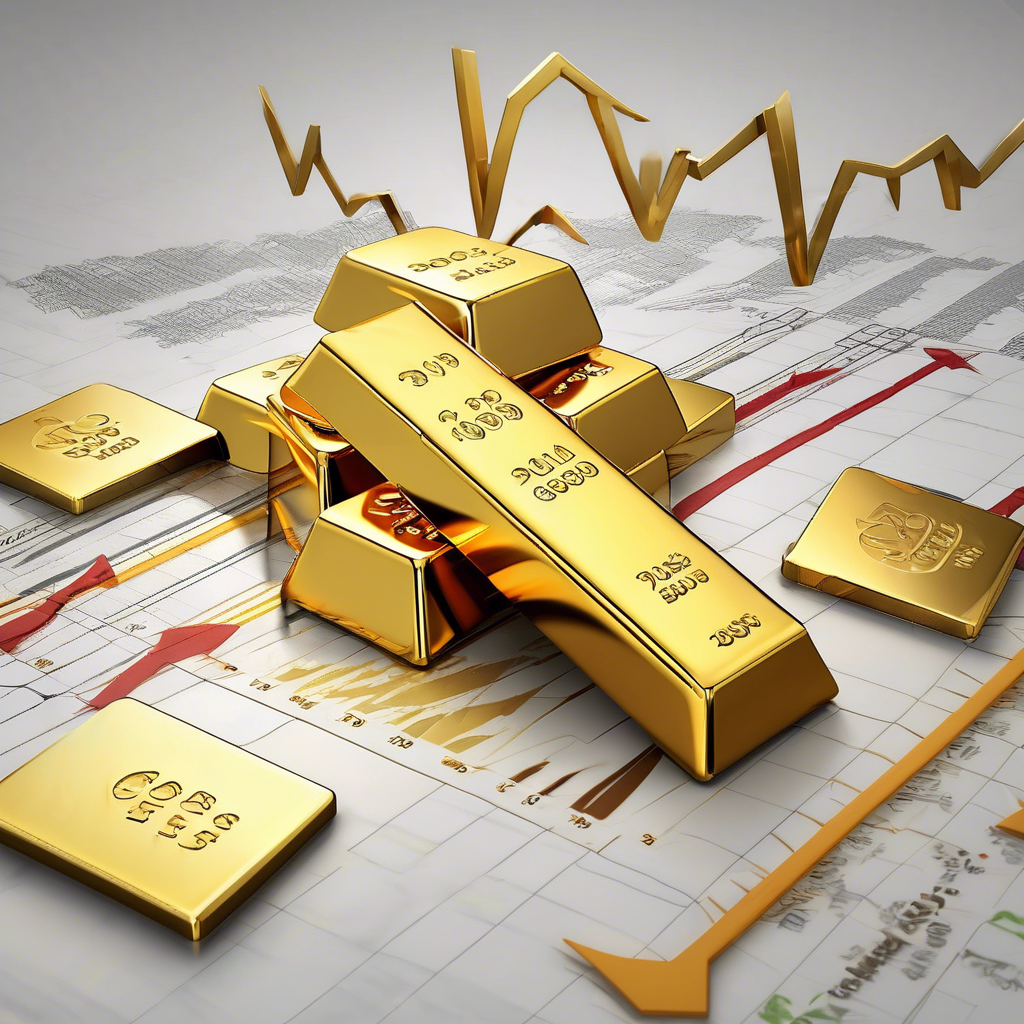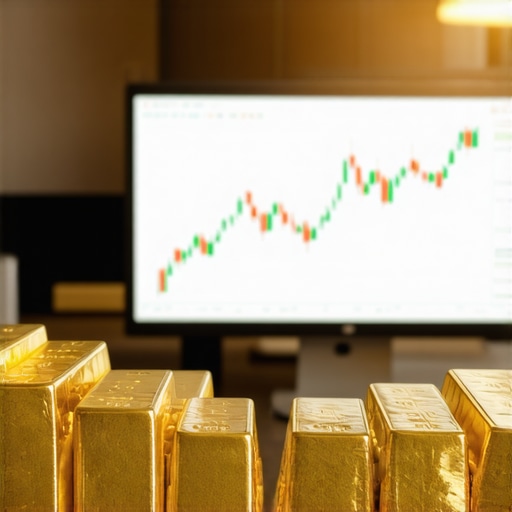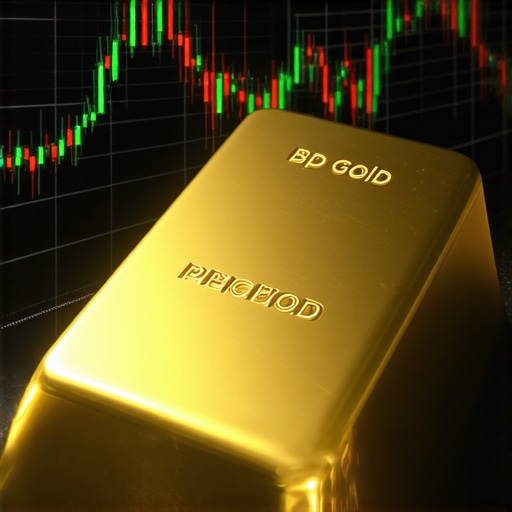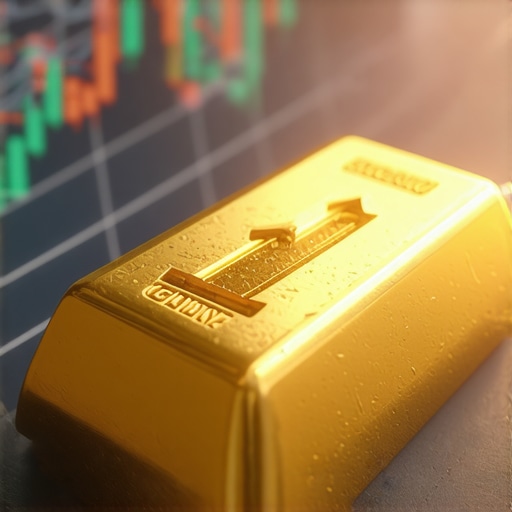Introduction to Gold Price Trends for 2025
As we approach 2025, understanding the key gold price trends becomes essential for investors and enthusiasts alike. Gold has been a cornerstone of wealth preservation and investment for centuries. Its intrinsic value, coupled with its role as a hedge against inflation and economic uncertainty, makes it a focal point for many looking to secure their financial future. In this article, we explore the various factors influencing gold prices and offer insights into what investors can expect in the coming years.
The Impact of Economic Factors on Gold Prices
Economic conditions play a significant role in determining gold prices. Factors such as inflation rates, interest rates, and overall economic growth can lead to fluctuations in gold demand. For instance, during periods of high inflation, investors often turn to gold as a reliable store of value, driving prices up. Furthermore, low-interest rates tend to boost gold investments because the opportunity cost of holding non-yielding assets like gold decreases.
As we look towards 2025, monitoring global economic indicators will be crucial for predicting gold price movements. The interplay between these economic factors not only affects gold prices but also impacts investor behavior and market sentiment.
Geopolitical Events and Their Influence on Gold Demand
Geopolitical events can create uncertainty in the markets, which typically leads to increased demand for gold. Investors often seek safety in gold during times of political instability, conflict, or significant economic changes. As we move further into the decade, it’s essential to keep an eye on global developments that could influence gold prices.
For example, recent tensions in various regions or trade disputes can cause fluctuations in market confidence. Understanding how these events affect gold prices will empower investors to make informed decisions.
The Role of Central Banks in Gold Market Dynamics
Central banks also play a pivotal role in the gold market. Their decisions regarding gold purchases can significantly impact supply and demand dynamics. In recent years, many central banks have increased their gold reserves as a strategy to diversify their assets and mitigate risks associated with fiat currencies.
For investors, keeping track of central bank policies and their implications on gold pricing is crucial. As we head into 2025, the ongoing strategies of these institutions will be key indicators of future gold price trends.
Conclusion: Preparing for the Future of Gold Investment
Understanding the key gold price trends for 2025 requires a comprehensive analysis of economic indicators, geopolitical events, and central bank activities. As an investor, being aware of these dynamics will help you navigate the fluctuating gold market effectively. Whether you’re considering adding gold to your portfolio or simply wish to stay informed, keeping abreast of these trends will position you well for the future.
Gold Demand Trends: Analyzing Key Influences for 2025
The dynamics of gold demand are influenced by a multitude of factors that investors must understand to make informed decisions. As we anticipate the developments leading to 2025, it is essential to delve into the components that shape the gold market. From investment trends to consumer behavior, these factors will provide insights into the future of gold.
The Rise of Gold ETFs and Investment Vehicles
Exchange-Traded Funds (ETFs) have revolutionized gold investing. They offer a convenient way for investors to gain exposure to gold without the challenges of physical ownership. As more individuals look for investment options that suit their financial goals, the popularity of gold ETFs continues to grow. This trend is particularly significant for millennials and new investors who prefer digital solutions and liquidity.
By understanding how gold ETFs function, investors can better position themselves in the market. They provide a transparent and cost-effective means to invest in gold, which can lead to increased demand as more people enter the market.
Consumer Demand: Jewelry and Industrial Uses
Gold’s appeal extends beyond investment, particularly in the jewelry sector. The cultural significance of gold in various regions drives substantial consumer demand. For instance, countries like India and China are major consumers of gold jewelry, especially during festive seasons.
Furthermore, industrial applications of gold, including its use in electronics and technology, are emerging as significant demand drivers. Understanding these consumer trends will be critical for predicting gold price movements. As we approach 2025, keeping an eye on consumer behavior will help investors gauge the overall demand landscape.
Inflation Hedge: The Growing Importance of Gold
Gold has long been viewed as a hedge against inflation. With rising inflation rates in various economies, investors are increasingly turning to gold to preserve their purchasing power. This trend is particularly relevant as central banks navigate their monetary policies, which can lead to inflationary pressures.
As we move closer to 2025, the importance of gold as a protective asset will likely become more pronounced. Investors should consider how gold can fit into their overall strategy in light of inflation concerns. For more detailed insights on this topic, refer to hedging against inflation.
The Future of Gold Mining and Supply Chain Dynamics
The gold mining industry plays a crucial role in maintaining the balance of supply and demand. As we look toward the future, understanding the challenges faced by gold miners will be vital. Factors such as regulatory changes, environmental concerns, and technological advancements can all impact gold production.
Moreover, how gold mining companies adapt to these challenges could influence the overall supply of gold in the market. By analyzing the performance of gold mining during economic shifts, investors can strategize their investments more effectively.
Conclusion: Staying Ahead in the Gold Market
As we prepare for the evolving landscape of gold investments in 2025, staying informed about demand trends, geopolitical factors, and market dynamics is essential. By understanding the intricate web of influences on gold prices, investors can navigate the market with confidence and make decisions that align with their financial goals.
Geopolitical Factors Influencing Gold Demand
Geopolitical tensions and economic instability play a pivotal role in shaping gold demand. Investors often flock to gold during times of uncertainty, viewing it as a safe-haven asset. Countries experiencing political unrest or economic volatility see increased gold purchases as citizens seek to safeguard their wealth. In 2025, factors such as trade disputes, regional conflicts, and changes in government policies will significantly impact the gold market. Investors must stay informed about global events and their potential effects on gold prices.
The Role of Central Banks in Gold Demand
Central banks worldwide are major players in the gold market, accumulating gold reserves to diversify their assets and hedge against economic fluctuations. As central banks continue to increase their gold holdings, this trend will drive demand and potentially influence prices. Understanding the motivations behind central bank purchases, including currency stabilization and inflation protection, is essential for investors. Keeping an eye on central bank activities can provide valuable insights into market trends.
Technological Advancements and Gold Production
Innovations in mining technology are reshaping the gold production landscape, impacting supply and demand dynamics. Advanced extraction methods and improved efficiency can lead to increased production, which may influence market prices. Additionally, as new mining projects are developed, investors should monitor how these changes affect the overall gold supply. With a growing interest in sustainable practices, the adoption of green technologies in mining will also play a crucial role in the future of gold production.
Gold as a Portfolio Diversifier
Investing in gold offers diversification benefits for investors looking to mitigate risks associated with market volatility. By incorporating gold into their portfolios, investors can balance their exposure to stocks and bonds, especially during economic downturns. The historical performance of gold as a stable asset, particularly during market crises, reinforces its value as a strategic investment choice. For more details on how to effectively diversify your portfolio with gold, consider consulting expert resources.
Future Predictions: Anticipating Gold Demand Trends
As we approach 2025, several trends are projected to shape the future of gold demand. The ongoing digital transformation may lead to new opportunities in gold investments, such as blockchain technology and digital gold tokens. Additionally, global economic recovery efforts post-pandemic may influence consumer behavior and investment patterns. Awareness of emerging trends and adapting investment strategies accordingly will be key for investors looking to capitalize on future gold demand.
Conclusion: Preparing for an Evolving Gold Market
In summary, understanding the multifaceted factors influencing gold demand, from geopolitical events to technological advancements, will empower investors to navigate the gold market effectively. As we look towards 2025, staying updated on these developments will be crucial for making informed investment decisions.
Environmental Factors Shaping Gold Mining
The environmental impact of gold mining is becoming increasingly important as investors and consumers prioritize sustainability. As regulations tighten and the demand for ethical sourcing grows, mining companies must adapt to environmental standards while maintaining production levels. Investors should consider how these environmental factors affect gold supply and prices. Embracing sustainable mining practices not only enhances a company’s reputation but also aligns with the global shift towards responsible investing. For insights into sustainable gold investments, exploring the implications of eco-friendly mining can guide informed decisions.
Gold’s Role in Economic Recovery
As economies recover from the impacts of the global pandemic, gold is poised to play a crucial role in stabilizing portfolios. Investors are likely to turn to gold as a hedge against inflation and currency fluctuations, especially in uncertain economic landscapes. The historical resilience of gold during financial crises reinforces its status as a reliable asset. Understanding how gold performs during recovery periods can provide investors with a roadmap for strategic investments. Analysts suggest that the upcoming years will see a renewed interest in gold as a protective asset.
Investor Psychology and Gold Demand
The psychology of investors significantly influences gold demand. During periods of economic uncertainty, fear and risk aversion lead to increased gold purchases. Conversely, bullish market sentiments can decrease demand as investors seek higher returns in equities. Recognizing these psychological trends is essential for predicting gold market fluctuations. Investors should stay attuned to market sentiment and news cycles, as public perception can sway gold prices dramatically. For a deeper understanding of investor behavior in the gold market, following market trends is vital.
Global Economic Indicators and Their Impact on Gold Prices
Key economic indicators, such as interest rates, inflation rates, and employment figures, have a direct impact on gold prices. For example, rising inflation typically drives investors towards gold, while higher interest rates may lead to decreased demand as bonds become more attractive. As we approach 2025, monitoring these economic indicators will help investors make informed decisions regarding their gold investments. Staying updated on economic trends and their relationship with gold can enhance investment strategies.
Conclusion: Strategizing for the Future of Gold Investments
In conclusion, understanding the myriad factors influencing gold demand—from environmental impacts to investor psychology—is essential for navigating the evolving gold market. As we move towards 2025, investors must remain vigilant and adaptable to capitalize on emerging trends and opportunities within the gold sector.
Frequently Asked Questions About Gold Investments
What factors influence gold prices?
Gold prices are influenced by various factors, including global economic indicators, interest rates, inflation, and geopolitical events. Understanding these factors can help investors make more informed decisions regarding their investments in gold.
How does inflation affect gold investments?
During periods of inflation, the value of currency declines, leading investors to seek gold as a hedge against this decline. Historically, gold tends to perform well during inflationary periods, maintaining its value and appealing to those looking to preserve wealth.
Why is gold considered a safe-haven investment?
Gold is deemed a safe-haven investment because it retains value during economic downturns and market volatility. Investors flock to gold when they anticipate instability in financial markets, as it often acts as a buffer against losses in other asset classes.
What is the impact of interest rates on gold?
Higher interest rates can lead to reduced demand for gold, as bonds and other interest-bearing assets become more attractive. Conversely, when interest rates are low, gold becomes more appealing due to the lack of yield from other investments, prompting increased buying activity.
How do geopolitical events affect gold demand?
Geopolitical tensions and uncertainties often drive investors to gold as a safe investment. Events such as wars, elections, or diplomatic conflicts can lead to market volatility, increasing demand for gold as a protective asset.
Is gold a good investment for retirement?
Including gold in a retirement portfolio can provide diversification and protection against inflation. However, it’s essential to consider an individual’s risk tolerance and investment strategy when determining the role of gold in retirement planning.
What are the benefits of investing in physical gold versus paper gold?
Investing in physical gold offers tangible ownership and protection from market fluctuations, while paper gold (such as ETFs) provides liquidity and ease of trading. Each has its benefits and drawbacks, and investors should choose based on their preferences and investment goals.
How can I start investing in gold?
Investing in gold can be done through various methods, including purchasing physical gold, investing in gold ETFs, or buying shares in gold mining companies. Researching the different options and understanding the associated risks is crucial before starting.
What role does gold play in a diversified investment portfolio?
Gold serves as a valuable part of a diversified investment portfolio, providing a hedge against inflation and market volatility. By allocating a portion of investments to gold, investors can potentially reduce overall portfolio risk and enhance long-term stability.
Authority Resources for Gold Investment Insights
For further reading and in-depth analysis of gold investments, consider the following trusted resources:
- World Gold Council – A leading authority on gold with insights into market trends, investment advice, and research reports.
- Investopedia – Offers extensive educational resources on investing, including articles and guides about gold and precious metals.
- Forbes – A reputable source for financial news, insights, and expert opinions on gold investments.
- Kitco – Provides live gold prices, charts, and news updates relevant to gold investors.
- Bloomberg – Offers financial information, including market analysis and trends that affect gold prices.
Conclusion: Navigating the Future of Gold Investments
As we have explored through various facets of the gold market, the dynamics influencing gold investments are complex yet fascinating. From environmental considerations to psychological factors and economic indicators, each aspect plays a significant role in shaping investor behavior and market trends. Keeping informed through reputable sources and understanding the underlying factors will empower investors to make strategic decisions as they navigate the evolving landscape of gold investments. As you consider adding gold to your portfolio, remember that it remains a cornerstone asset for building wealth and preserving value in uncertain times.











The article offers a comprehensive overview of the various factors influencing gold price trends as we approach 2025, especially emphasizing economic indicators and geopolitical events. From my experience, what intrigues me most is how investor psychology can amplify these trends. When market volatility spikes, it seems gold demand often surges well beyond what fundamental indicators might suggest, driven by fear and the instinct to preserve wealth. I’ve noticed in recent years that this psychological aspect sometimes causes short-term price spikes that might catch newer investors off guard. Additionally, with the rise of digital gold investment vehicles like ETFs mentioned in the article, accessibility has changed the game, inviting a broader demographic into the market. This democratization is exciting but also adds new dynamics to price movements. I’m curious how other readers interpret the interplay between traditional economic factors and the growing influence of technology and investor sentiment? Do you think these psychological factors will increasingly dominate gold price behavior moving forward, or will fundamentals retain their primacy? Looking forward to hearing diverse perspectives on these evolving trends.